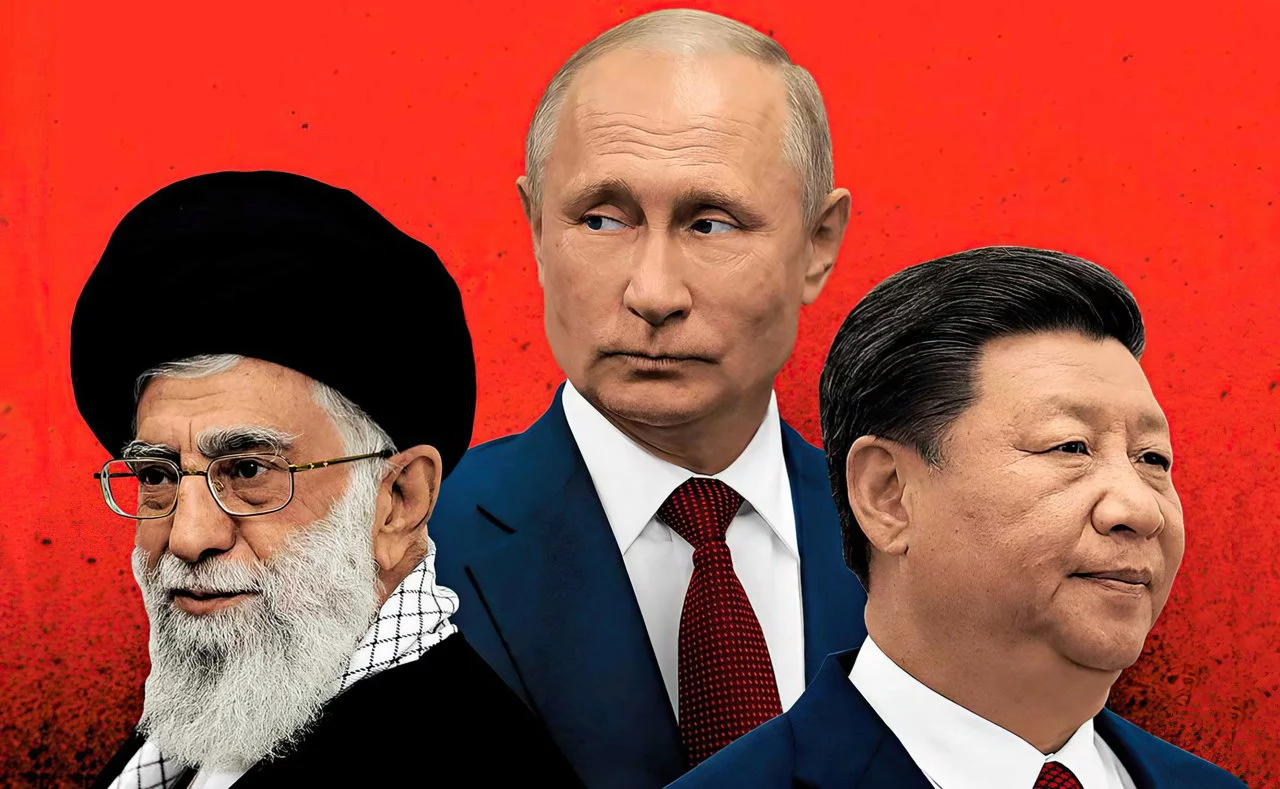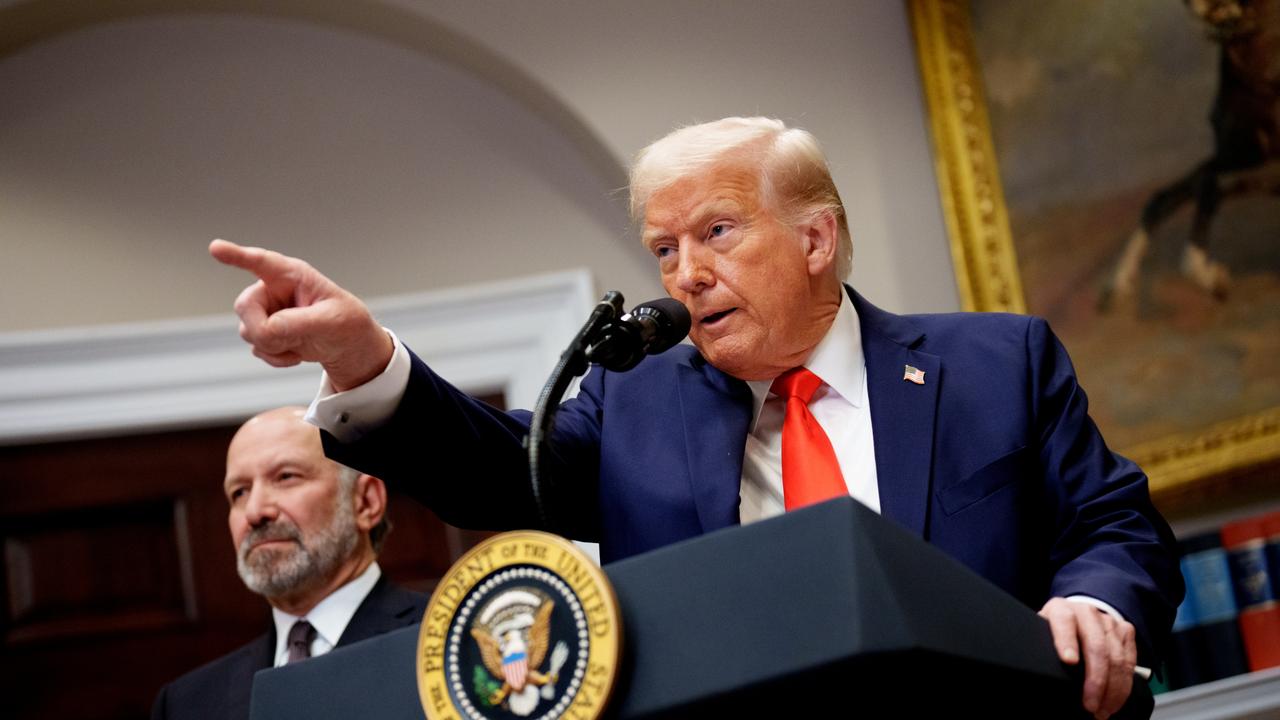How Russia, China, and Iran Could Spark the Next Global War — And Why North Korea Might Join In: The world today is standing on the edge of a dangerous geopolitical fault line. Russia, China, Iran, and increasingly, North Korea—four authoritarian states with distinct goals but a common enemy—are building a quiet, dangerous alignment against the US-led global order.
What started as isolated tensions—Russia in Ukraine, China over Taiwan, Iran in the Gulf—is now rapidly converging into a potential global conflict, with each power feeding off the instability caused by the others.
As of mid-2025, with the Strait of Hormuz under threat, the Ukraine war dragging on, Taiwan on edge, and North Korea testing missiles, the world is now at its most dangerous point since the Cold War.
Axis of Revisionists: Why Russia, China, Iran, and North Korea Are Aligning
Shared Goal: Weaken the West
The world’s most aggressive authoritarian states don’t necessarily love each other—but they have a shared strategic goal: undermine and dismantle US dominance in global trade, security, and finance.
Each has a reason:
-
Russia wants to break Western unity over Ukraine and punish the US for NATO expansion.
-
China wants to shift global influence eastward and secure dominance in Asia.
-
Iran wants to expel US influence from the Middle East and dominate the Islamic world.
-
North Korea wants regime survival and leverage through its nuclear arsenal.
Mutual Support Network
-
Russia buys Iranian drones for Ukraine, and in return, provides Iran with missile guidance systems.
-
China buys discounted Iranian oil, funds infrastructure, and supplies military-grade components.
-
North Korea supplies artillery shells to Russia, and in turn, receives food, oil, and advanced tech from both Russia and China.
-
Intelligence sharing between Iranian IRGC, Russian GRU, Chinese MSS, and North Korean Reconnaissance General Bureau (RGB) has accelerated in 2024-2025.
Together, these nations don’t need to be formal allies—they just need to create enough simultaneous crises to overstretch Western military and diplomatic resources.
Strait of Hormuz: Global Economy’s Weak Spot
The Strait of Hormuz remains the most vulnerable economic chokepoint in the world.
Why does it matter?
-
17-20% of global oil flows through this narrow channel between Iran, Oman, and the UAE.
-
Major Asian economies—Japan, India, China—depend on this oil for survival.
-
Blocking it could push oil prices above $150 per barrel, triggering recession-like inflation globally.
Iran’s Threats (2025):
-
Iranian naval forces have already staged drills simulating attacks on oil tankers.
-
With Russian military advisors in Tehran and Chinese technology aiding radar and drone systems, Iran feels more emboldened than ever.
For the US, this scenario presents a nightmare: if it commits forces to the Gulf, it weakens its deterrence posture in Europe (against Russia) and Asia (against China).
North Korea’s Wild Card
While the world focuses on Ukraine and the Middle East, North Korea has been increasing its missile tests, including ICBM launches over Japanese airspace in early 2025.
Why North Korea matters here:
-
Distraction Factor: If North Korea escalates, it forces the US and its allies (Japan, South Korea) to divert military resources to the Pacific.
-
Coordination Signals: Western intelligence reports indicate suspicious timing between Russian battlefield offensives, Iranian proxy escalations, and North Korean missile tests.
-
Nuclear Threat: North Korea is now believed to have over 60 operational nuclear warheads and solid-fuel ICBMs capable of striking US territory.
In a worst-case scenario, North Korea could stage a provocation (like shelling South Korean islands or testing a nuclear weapon) in coordination with Iranian moves in the Gulf, pushing Washington to its limits.
Europe and Asia: Stuck in the Middle
Europe’s Dilemma
-
Europe’s dependence on Middle Eastern oil remains high, despite efforts to diversify post-Ukraine crisis.
-
NATO forces are already stretched providing aid to Ukraine.
-
If the US pivots military resources to the Gulf or Indo-Pacific, Europe’s eastern flank becomes more vulnerable to further Russian aggression.
Asia’s Dilemma
-
Japan, South Korea, and increasingly India, fear that a simultaneous Middle East war, Russian expansionism, and North Korean threats could collapse global trade routes.
-
India, a major Iranian oil buyer, now finds itself walking a diplomatic tightrope, balancing ties with Iran, friendship with Russia, and security cooperation with the US.
China’s Calculation
-
China benefits from global disorder, at least temporarily.
-
Cheaper oil, weakened US influence, and distraction over Taiwan are all net strategic wins for Beijing.
-
While China doesn’t want global collapse, it prefers controlled chaos—enough instability to break Western dominance, but not enough to damage global trade permanently.
The Oil War + Ukraine + Taiwan = World War?
Now imagine the convergence:
-
Iran blocks the Strait of Hormuz, sending oil prices skyrocketing.
-
Russia escalates offensives in Ukraine, sensing NATO weakness.
-
North Korea fires a missile over Japan or threatens Guam.
-
China ramps up aggression in the South China Sea or imposes a blockade on Taiwan.
This isn’t speculative—it’s the multi-front war scenario being actively gamed by Western military planners.
The result?
-
Global energy crisis.
-
Collapsing supply chains.
-
Massive refugee flows in Europe and Asia.
-
Global stock market crashes.
-
A potential direct military confrontation between nuclear-armed powers.
Why the US Can’t Walk Away
Despite calls from parts of the American political spectrum to “focus on home”, Washington knows that retreat means global instability. A full collapse of the post-World War II order would allow authoritarian regimes to redraw borders by force.
That’s why:
-
Massive naval deployments remain active in the Gulf and Pacific.
-
US military aid to Ukraine has hit record highs in early 2025.
-
Joint US-Japan-South Korea drills have ramped up in the Indo-Pacific.
-
Israel is preparing for a possible pre-emptive strike on Iranian nuclear facilities if the threat escalates.
One Spark, Many Fires – In Summary
The Russia-China-Iran-North Korea axis may not be formal, but it’s real. Through shared goals, indirect coordination, and strategic opportunism, these nations are pushing the world toward a multi-front conflict.
One blockade in the Gulf, one missile test over Tokyo, one Iranian-backed attack on a US naval vessel, or one Israeli airstrike—and the world could find itself in the first great-power war of the 21st century.
Diplomacy continues, but time is running out.
The global economy is already shaking. One wrong move, and the world could burn.




